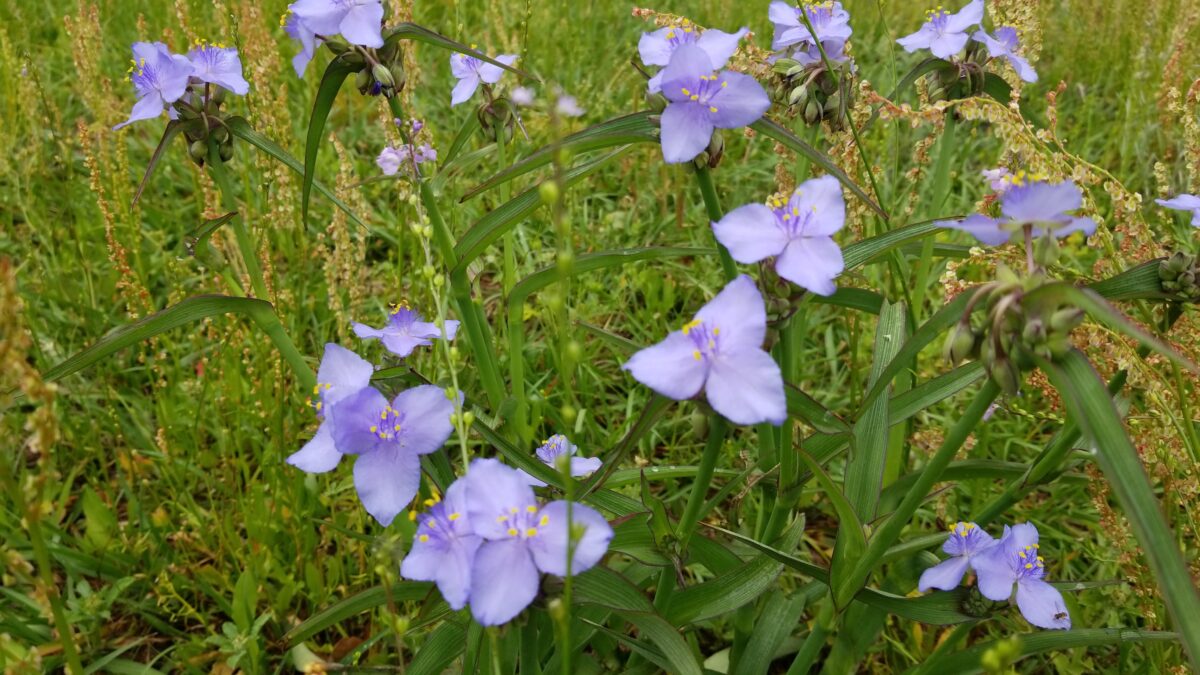Scientific and common names:
Tradescantia ohiensis
Bluejacket, Ohio spiderwortTradescantia virginiana
Virginia spiderwort, Spider lily
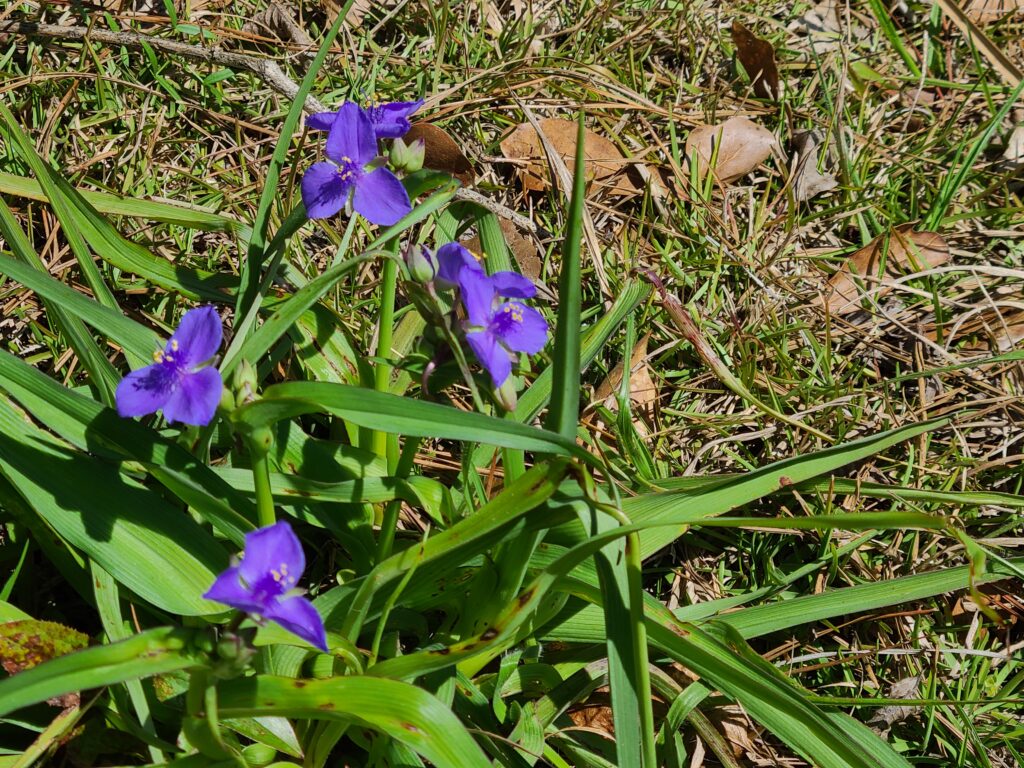
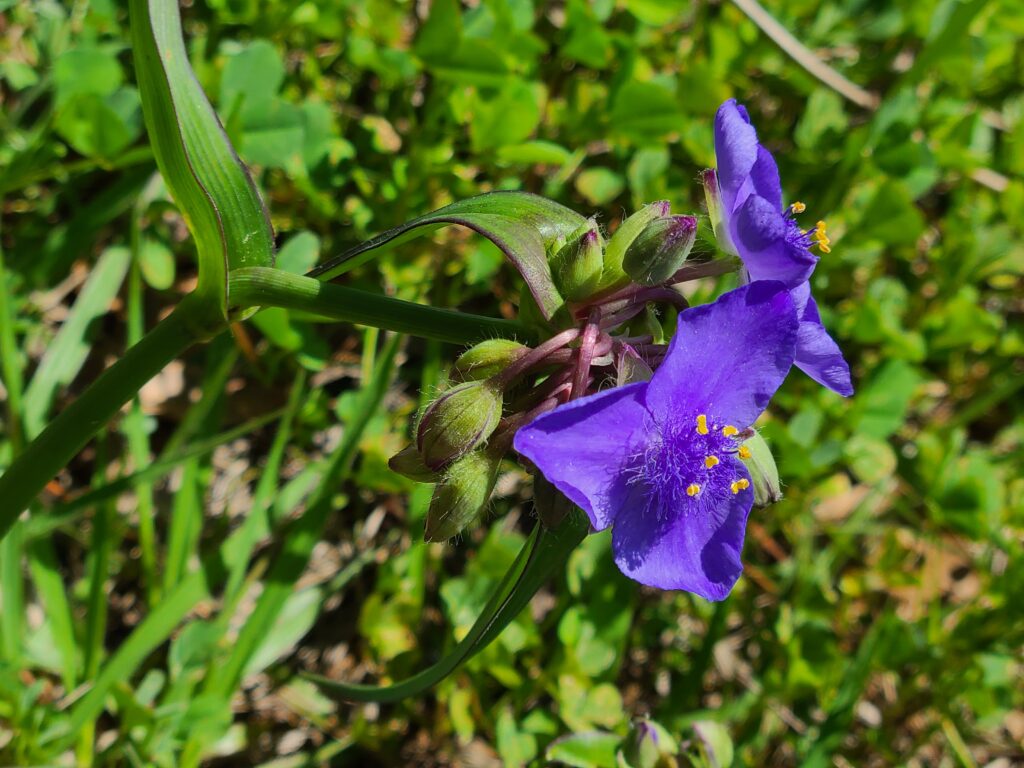
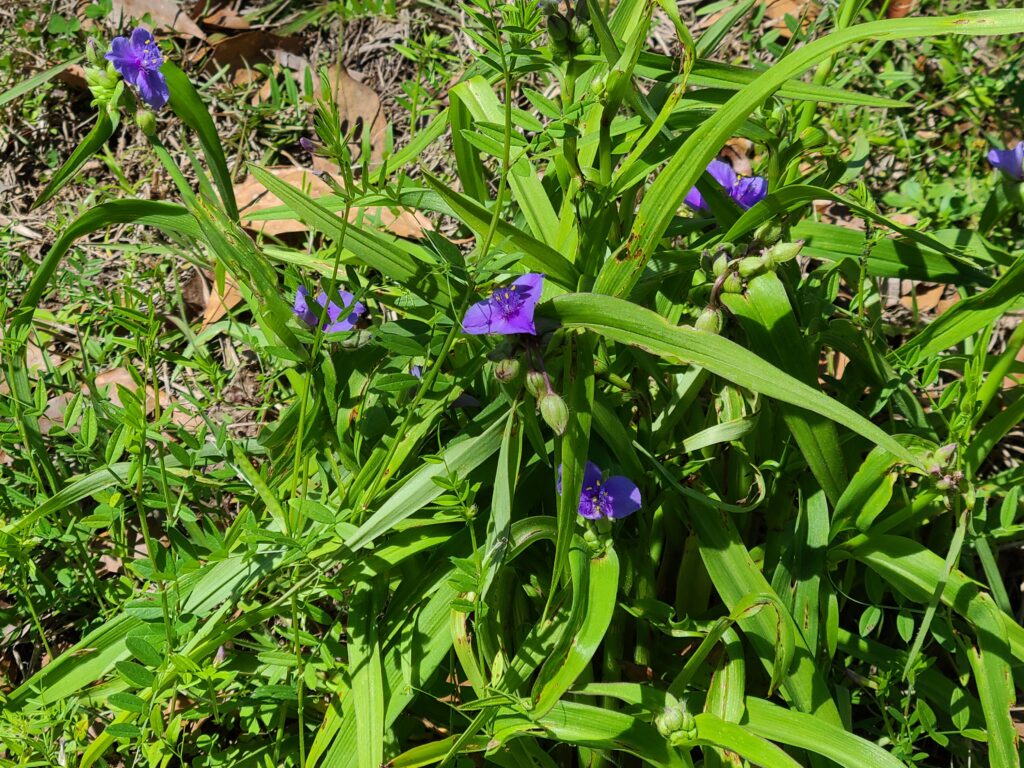

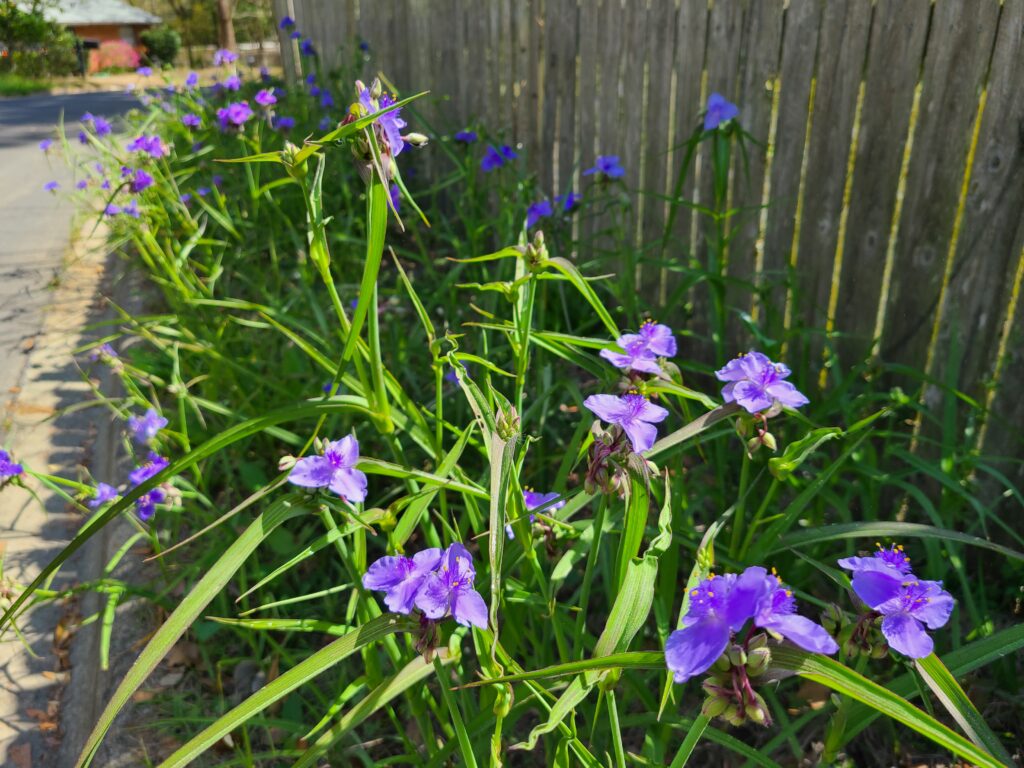
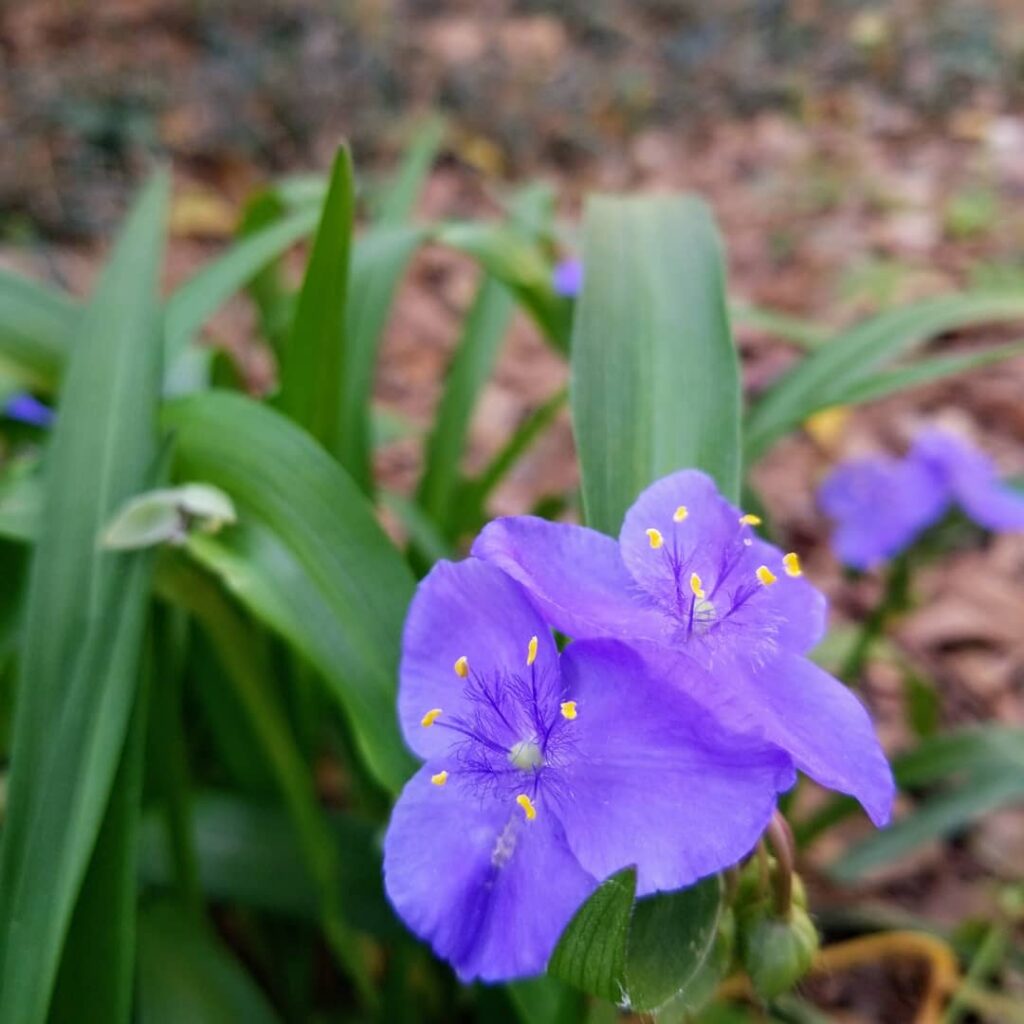
Identification
Spiderwort is a clumping grass-like perennial plant that commonly grows on lawns, roadsides, the edge of wooded areas and in areas of disturbed soil. It dies down to the roots in the winter but comes back each Spring. It’s often among the first flowers we see each year.
The three-petal flowers are violet or purple and have contrasting yellow stamens. The unopened flowers sit in clusters at the end of the plant stalks and open one or two at a time. Each flower is open for only one day, blooming in the morning and shriveling in the hot midday sun. The grass-like leaves can be over an inch wide and 12 or more inches long. The leaves attach to the central stalk in a folded way that often produces a groove in the leaf.1
Growing/Foraging
Spiderwort grows in a variety of conditions, can tolerate wet to dry soil and can handle full sun to shade. They thrive on the edges of wooded areas, along roadways and and in lawns. The plant blooms from early Spring until Autumn, though it dies back and blooms less in the heat of the summer.
Sustainability
This plant is very common and hardy in North Florida. There is little concern with overharvesting.
Medicinal and Food Properties
Virginia Spiderwort has a variety of medicinal uses within the traditions of Cherokee healers. It was made into tea to ease stomach aches and constipation. It is used as part of a tea with other herbs for kidney issues and “ailments or rupture” related to the uterus. A poultice of the root is used for cancer. The Cherokee also cooked young growth and leaves parboiled, fried, or mixed with other greens.2
The leaves, when torn or mashed, secrete a sticky juice that is used to treat bug bites and scratches.3
The entire plant is edible. The flowers and leaves can be eaten raw and added to salads. The leaves can also be added to soups, omelets and stir-fry. The stems can be braised or roasted like asparagus. Spiderwort does not get bitter in the heat of the Florida Summer like many other greens.4
Spiderworts are a large family of plants and the medicinal properties of many of them have been studied and found to be effective. However, the two varieties discussed here have had little or no formal research done on them. We rely on traditional folk knowledge to understand how best to use them.
Safety
There is no indication that consuming these plants is dangerous.
Recipes
Fermented Spiderwort Soda5
Ingredients
- 1 quart-sized mason jar
- Fresh spiderwort blossoms, with the dew still on (actually it doesn’t really have to have dew, but the flowers must be freshly blooming)
- 3 tablespoons raw honey
- Fresh, unchlorinated water (about 1 quart)
Instructions
- Pick enough fresh flowers to fill the jar half way (2 cups).
- Drizzle in the honey.
- Add the water until the jar is mostly full, with a little room at the top, say 1/4 – 1/2 inch.
- Cap the jar and let it sit out on the counter for 3-5 days. The blue color will gradually soak out of the flowers while the natural yeast and good bacteria in the honey will make the soda become bubbly and effervescent.
- Full instructions at Toadstools and Fairyrings.
Sources

